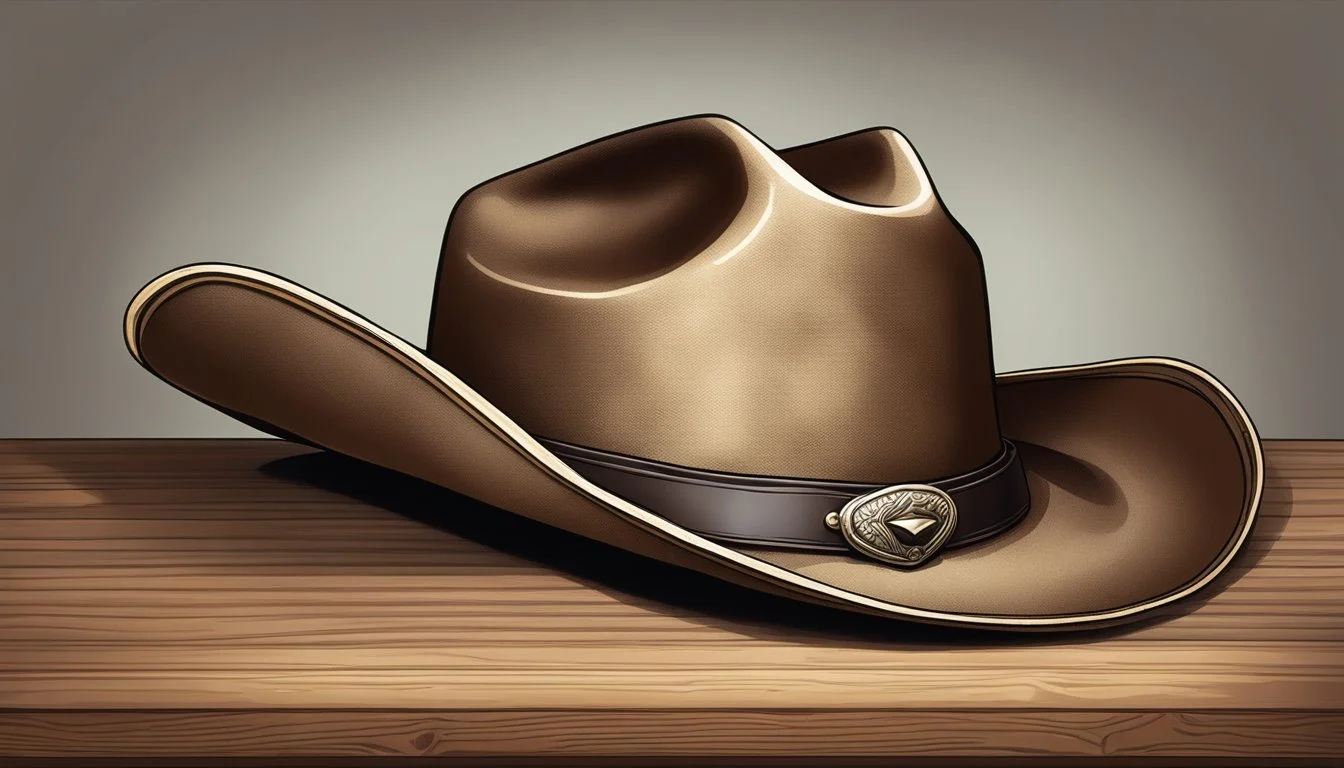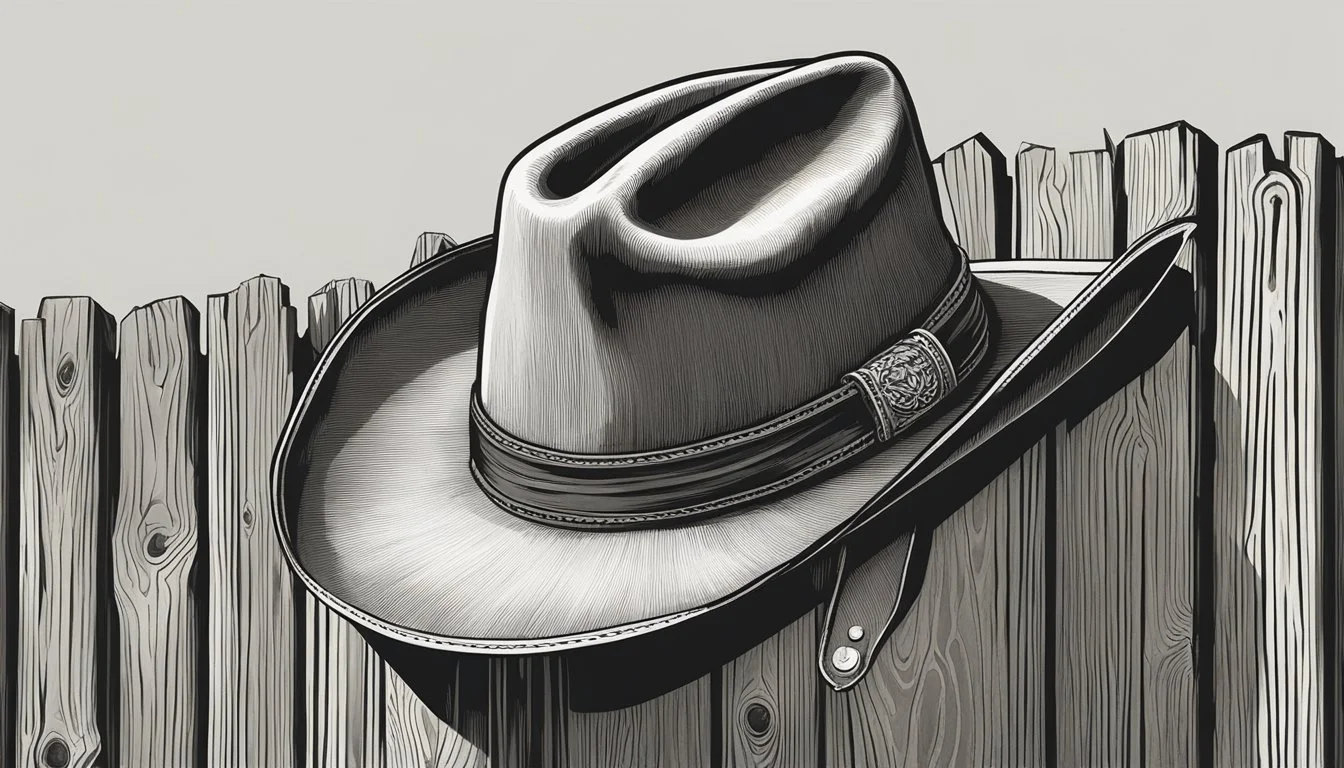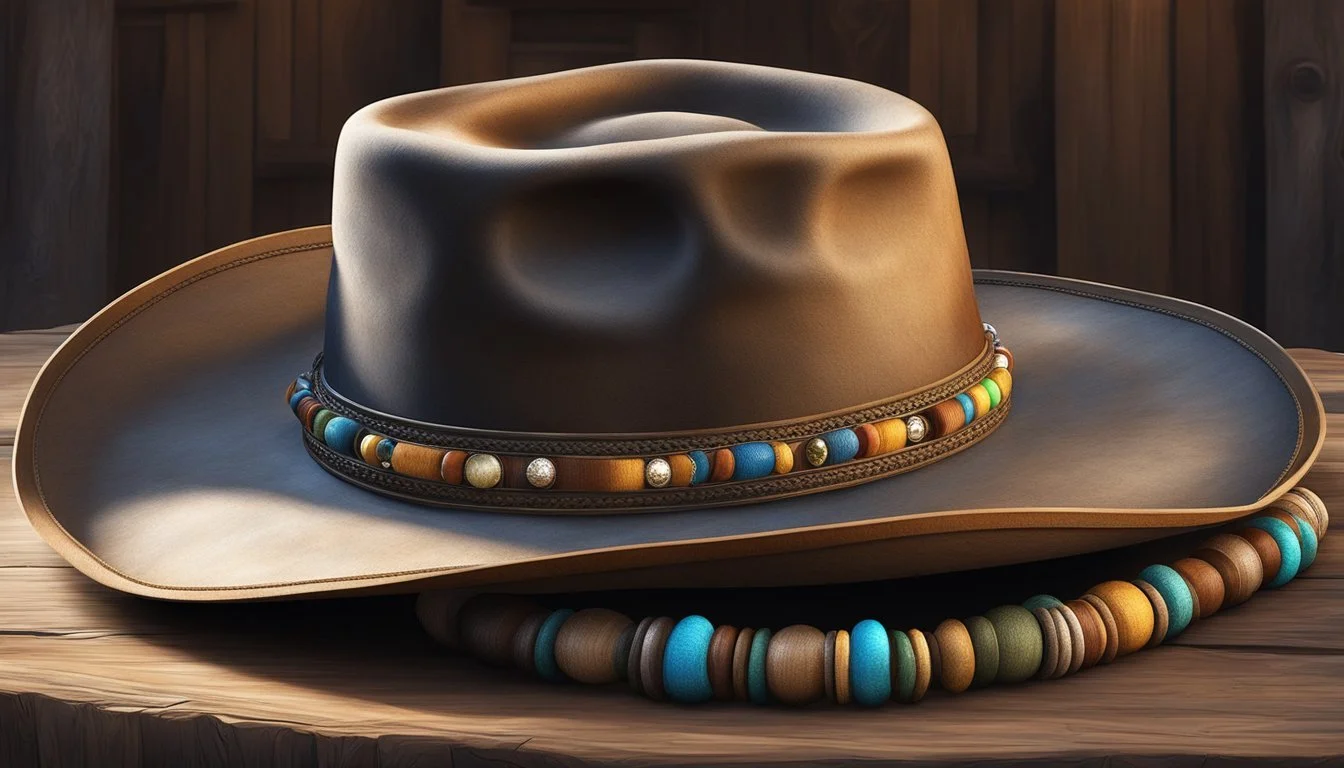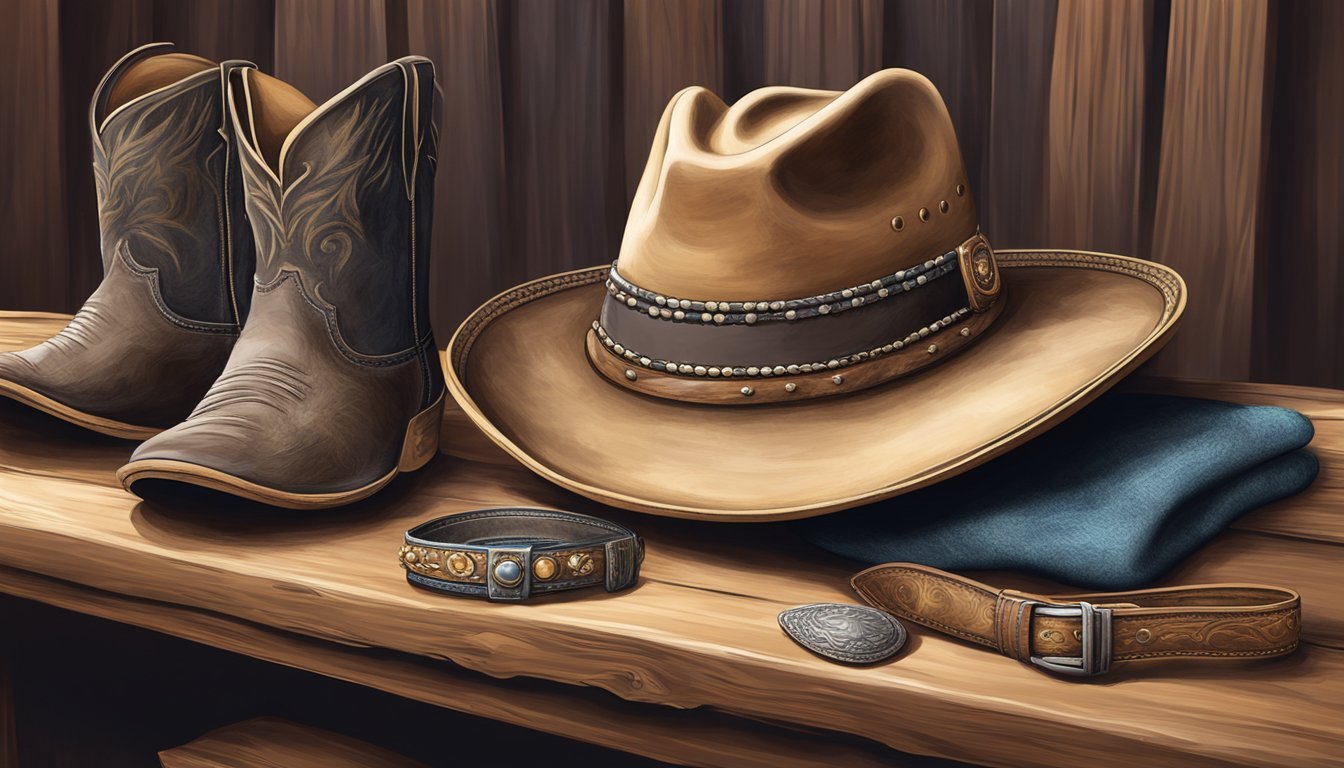The Anatomy of a Cowboy Hat
Exploring Traditional Designs and Modern Fabrics
The cowboy hat is an iconic symbol of Western heritage, prominent in both historical and contemporary culture. Its practical design serves more than mere aesthetic – it provides substantial protection against the elements. Beyond functionality, the cowboy hat has evolved into a fashion statement, each style expressing a unique persona.
Construction of a cowboy hat begins with high-quality materials, commonly felt derived from beaver, rabbit, or wool, as well as straw varieties for the warmer seasons. The anatomy of these hats includes a crown, which can feature various crease patterns such as the Cattleman or Pinched Front, and a brim that offers shade from the sun.
Styles and creases, alongside the chosen material, dictate the hat's durability and suitability for different weather conditions and social settings. Despite changes in fashion, the cowboy hat retains its status as a staple of Western attire and an emblem of resilience and adventure.
History and Evolution
The cowboy hat has undergone significant transformation since its origins, becoming an emblem of the American West largely thanks to the influence of John B. Stetson and the practical needs of the cowboys.
Origins of the Cowboy Hat
The cowboy hat has roots that trace back to the 13th century when Mongolian horseback riders wore hats with tall crowns and brims for sun protection. These designs influenced the hats of Mexican vaqueros—the original cowhands—which, in turn, inspired the American cowboy hat.
Influence of John B. Stetson
John B. Stetson revolutionized the design with his creation of the "Boss of the Plains" in 1865, a hat that featured a flat brim and a high crown without the crease known today. His design combined function and fashion, setting a standard for future cowboy hats.
Adaptation and Significance in the American West
Adaptation to the harsh conditions of the American West made the cowboy hat an essential part of a cowboy's attire. Styles were tailored to suit various climates and needs, becoming a symbol of cowboy culture. The cowboy hat is not just practical but also carries with it a rich history tied to the identity of the American West and its enduring legacy.
Anatomy of a Cowboy Hat
The anatomy of a cowboy hat consists of several key components, each with its distinct purposes. Understanding the crown, brim, and other essential parts allows one to appreciate the hat's form and function.
Understanding the Crown
The crown is the top portion of the cowboy hat that sits on the head. Its shape can vary, affecting not only style but also function. Some popular crown shapes include the Cattleman, with a central crease and two side dents; and the Gambler, which features a flat top. The height and shape of the crown influence both the look and the comfort of the hat.
The Significance of the Brim
The brim extends outward from the base of the crown and serves to provide shade and protection from the elements. The brim shape can be flat or shaped upwards or downwards. Variations in brim size reflect the practical needs of the wearer, with wider brims offering more sun protection.
Other Essential Parts
Other parts of a cowboy hat include the sweatband and hatband. The sweatband is an inner band, often made from leather, that helps stabilize the hat on the wearer's head and absorb sweat. The hatband, typically an external decorative piece, encircles the crown at its base, providing an accent or a place for personalization.
Materials Used in Cowboy Hats
Cowboy hats are crafted from a variety of materials, each selected for its durability, appearance, and comfort. The most common materials include felt made from wool or fur, straw, and leather.
Felt Hats: Wool and Fur
Wool felt hats are a cost-effective option that provides warmth and respectable durability. They are frequently chosen for cooler climates and are marked by their soft, crushable texture. Fur felt, on the other hand, is made from finer materials like beaver fur, which offers superior resilience, water resistance, and longevity. Fur felt cowboy hats are considered premium due to their finer texture and higher level of craftsmanship.
Straw Cowboy Hats
Straw cowboy hats are ideal for hotter weather, thanks to their lighter weight and breathability. They are generally made from a variety of plant-based materials, such as palm leaf, which is known for its strength and flexibility. These hats are designed to provide shade from the sun while maintaining air circulation, making them a practical choice for outdoor work and leisure during the warmer months.
Leather and Other Materials
Leather cowboy hats are prized for their ruggedness and distinctive aesthetic. Made from various leather types, they can withstand rough conditions while aging gracefully. In addition to leather, other materials like synthetic fabrics are sometimes used to offer a different look or specialized features, such as water resistance or unique textures. However, traditional cowboy hats are rarely made from these alternative materials.
Styles and Shapes
The cowboy hat, iconic in its silhouette, has evolved into various styles and shapes, each with distinctive features catering to aesthetics and functionality.
Classic Cowboy Hat Styles
Cattleman: The most classic and widespread of cowboy hat styles, it features a tall crown with a distinctive three-part crease, commonly known as the "cattleman's crease." Its design serves both form and function, ideal for ranch work.
Gus: This style is notable for its sloped crease that provides a taller front, giving it an old-school, rugged look often associated with working cowboys of the Old West.
Gambler: The gambler style sports a flatter crown with a wide, circular brim. Resembling old riverboat gambler hats, it offers more shade and is less likely to blow off in windy conditions.
Cowboy Hat Shapes and Crown Creases
Crown Crease Varieties:
Open Crown: This shape starts as a simple, rounded top allowing owners to shape it to their preference.
Pinched Front: Recognized by a pinch on each side of the front, it provides a contemporary appeal.
Crease Functions:
Crown creases can impact how water is shed from the hat and contribute to the comfort and style of the hat on the wearer's head.
Brim Styles and Their Functions
The brim of a cowboy hat goes beyond aesthetic appeal to provide critical functionality.
Brim Functions:
Sun Protection: Brims serve to shade the face, neck, and eyes from the sun.
Weather Shielding: The shape of the brim can help deflect rain and shield against other elements.
The width and curvature of the brim can vary significantly across styles, with some offering larger overhangs for more protection or style distinction, such as the wide and flat brim of the Gambler or the more stylized, upward-sweeping brim of the Gus style.
Sizing and Fit for Comfort
When selecting a cowboy hat, it is pivotal that the individual ensures a proper fit, which directly affects comfort levels. A cowboy hat that is too tight may lead to discomfort or headaches, while one that is too loose could impair stability and ease of wear.
Determining the Right Size
To determine the correct size for a cowboy hat, one should measure the circumference of their head using a soft tape measure. The measurement should be taken from about two finger widths above the eyebrows, encircling the widest part of the head. This figure corresponds to specific hat sizes, typically provided in a size chart by manufacturers.
Cowboy Hat Size Chart:
Head Circumference (inches) Hat Size 21 1/8" 6 3/4 Small 21 1/2" 6 7/8 21 7/8" 7 Medium 22 1/4" 7 1/8 22 5/8" 7 1/4 Large 23" 7 3/8 23 1/2" 7 1/2 X-Large 23 7/8" 7 5/8 24 1/4" 7 3/4 2X-Large
Adjustments for a Perfect Fit
Once the size is determined, adjustments may be necessary for achieving a perfect fit that maintains comfort throughout wear. Some cowboy hats come with an internal band that can be tightened or loosened. If additional minor adjustments are needed, one may use foam inserts or padding beneath the sweatband to ensure the hat fits snugly without causing pressure or headaches. A proper fit allows enough space for one finger to fit between the hat band and the individual's head, signifying a harmonious balance of firmness and ease.
Functionality and Protection
The cowboy hat is designed not merely as a style icon but primarily for protection. Its design features cater to shielding wearers from the harsh elements while ensuring comfort through various weather conditions.
Sun Protection and Ventilation
Sun Protection: The brim of a cowboy hat is its first line of defense against the sun. Wide brims, typically found on classic Western hats, provide extensive shade for the face, neck, and shoulders, significantly reducing sun exposure.
Ventilation: Many cowboy hats incorporate design elements that allow for air circulation to keep the wearer cool. Features like strategically placed eyelets in the crown or the use of lightweight, breathable materials help in enhancing airflow.
Insulation and Durability
Insulation: Cowboy hats crafted from materials like felt are excellent for thermal insulation. They trap heat to keep the head warm in cold weather.
Durability: Materials such as leather and heavy-duty straw contribute to a cowboy hat's longevity. These materials are chosen for their ability to withstand the rigors of outdoor work and variable weather.
Personalization and Accessories
Cowboy hats offer numerous opportunities for personalization, enabling wearers to showcase their unique style. Selecting the right accessories and understanding their maintenance can transform a standard cowboy hat into a reflection of personal style and heritage.
Adding a Personal Touch with Hatbands
Hatbands are more than just decorative elements; they're a window into the wearer's personality. Often wrapped around the base of the crown, hatbands can vary from simple leather strips to elaborate designs featuring beads, conchos, or even intricate stitching. A well-chosen hatband not only accentuates the hat's appearance but also makes a statement about the individual's style and preferences.
Materials: Leather, suede, fabric, beads
Designs: Plain, studded, beaded, with conchos or embroidery
Choosing Embellishments
Cowboy hats can be adorned with various embellishments to elevate their look. Hat pins serve both a practical and aesthetic purpose, securing the hat while adding flair. Small decorative elements like conchos or metal accents can be attached directly to the hatband or the hat itself, providing a distinctive touch of elegance or ruggedness to the design, depending on the choice of motif.
Examples of Embellishments:
Hat pins
Feathers
Conchos
Beads
Care and Maintenance
Taking care of a cowboy hat is crucial for preserving its quality and appearance. It is important to store the hat on a proper hat rack to keep its shape, avoid exposure to excessive moisture and heat, and clean it according to the material it's made from. Regular cleaning and proper storage are critical to maintain the hat's integrity over time.
Storage Tips:
Use a hat rack for shaping
Avoid hanging by the brim to prevent warping
Care Suggestions:
Dust regularly with a soft brush
Clean stains promptly and according to manufacturer's instructions
Cultural Impact and Fashion
The cowboy hat has transcended its practical origins to become a significant symbol in popular culture and fashion, often associated with notions of rugged individualism and the American West.
The Cowboy Hat in Popular Culture
The cowboy hat has achieved a status akin to that of an emblem within popular culture, representing the spirit of the American West. Throughout the 20th century, it was popularized by Hollywood Westerns and worn by iconic actors such as John Wayne and Clint Eastwood, which cemented its association with courage and frontier justice. In modern times, it still appears in various media, continuing to evoke the Western heritage.
Cinema: The hat's prominent presence in films and television communicates a narrative of adventure and lawfulness.
Music: Country and western singers often don their cowboy hats, melding the hat’s image with their musical identities.
Adopting the Western Look
Adopting the Western look extends beyond mere fashion, as it embraces an entire lifestyle for some enthusiasts. The popularity of the cowboy hat is not only a testimony to its timeless style but also to its embodiment of the Western ethos.
Materials and Designs: While the traditional cowboy hat is made of felt or leather, modern interpretations use a variety of materials to suit fashion trends.
Public Events: At rodeos, country music festivals, and other Western-themed events, the cowboy hat is a common sight, symbolizing a shared cultural touchstone.
In both classic and contemporary circles, the popular cowboy hat endures, not merely as a fashion accessory but as a cultural icon woven into the Western identity.






